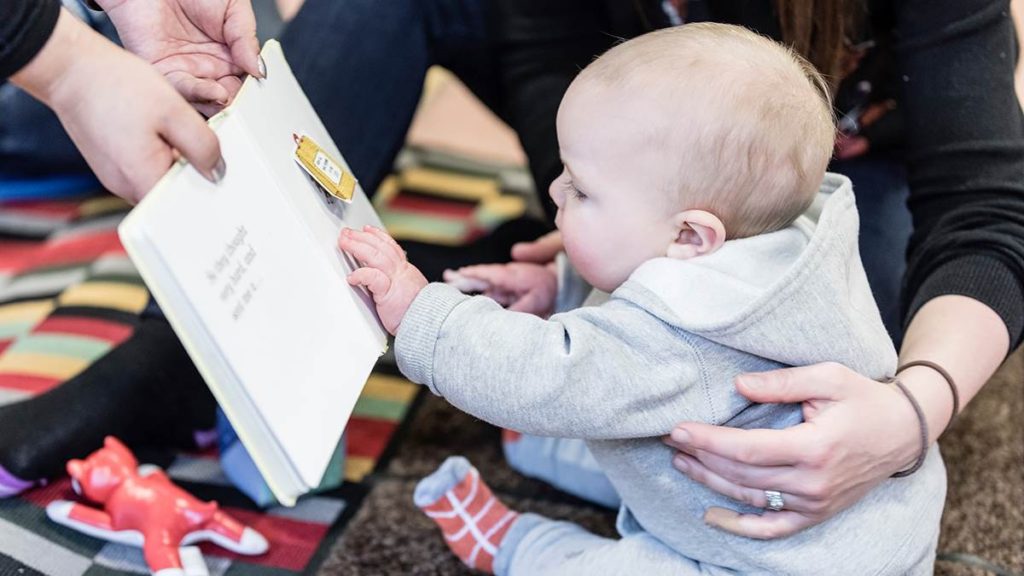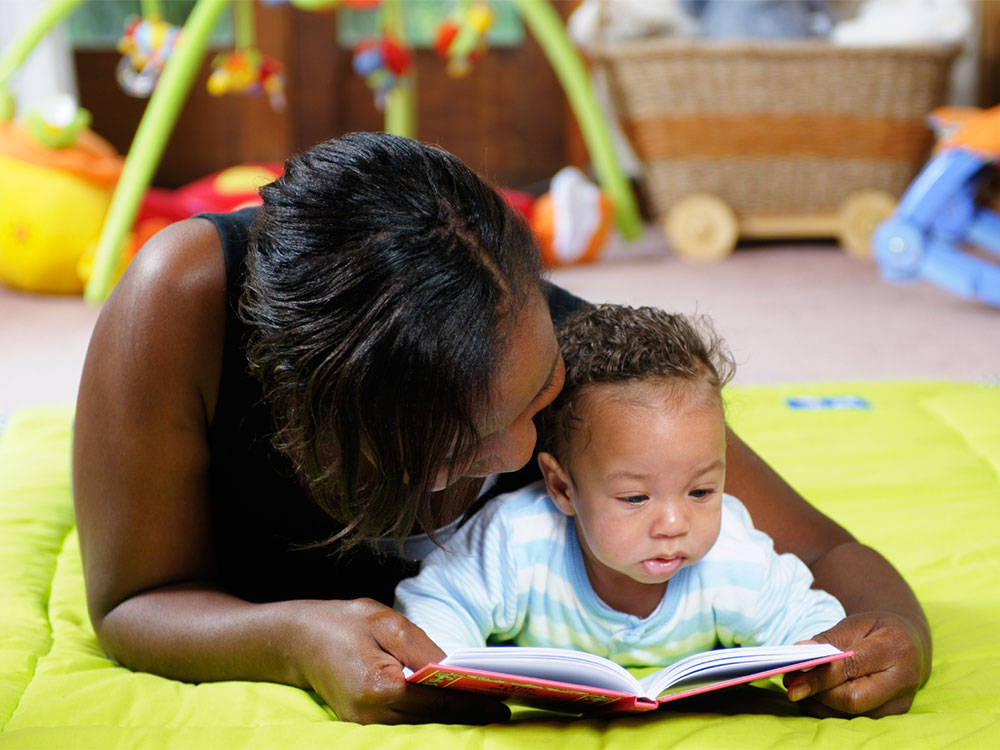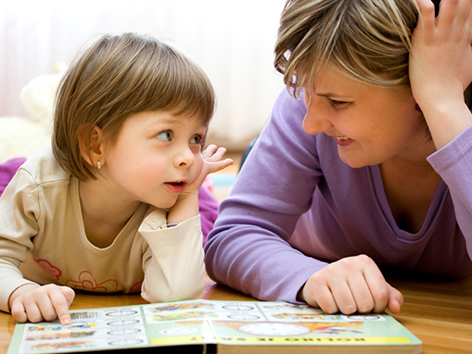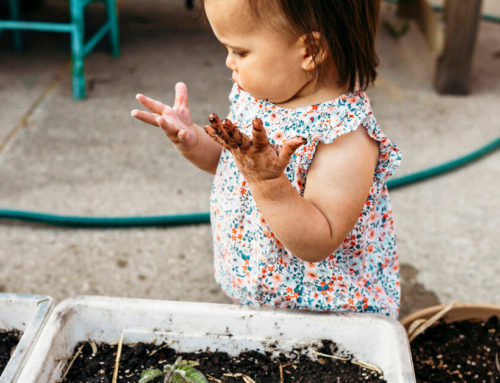With it being our language block currently, I’m wanting to share a little bit about the difference between reading and book sharing which is a concept we teach to our nannies throughout this block.
I have heard a lot of moms mention that their little ones aren’t interested in reading and that they tend to sit down and listen to a story for a few minutes and are then distracted and disinterested. I believe that all children like books – some definitely more than others, but if books are shared in an age-appropriate manner, then most little ones will be able to sit and enjoy them, without needing a quick escape 😉

Our little busy bodies cannot sit still for long periods of time, and they also have a limited concentration span which is important to keep in mind when bringing out the books. Reading to babies and toddlers involves the act of reading the words of a book/story (out loud) to them. This might mean that books with any style of writing or amount of writing are read to children. Remember that books cater for all ages and stages but in order to get the very most out of books, we need to ensure that we are ‘reading’ what’s developmentally appropriate to our little ones. Just as we would feel bored reading a simple picture book as an adult, so would babies get bored having a book read to them that is far beyond their ability to listen and understand.
We are not suggesting that you don’t read to your babies/toddlers but that you rather consider a more effective means of allowing them to interact with books known as ‘book sharing’. This is where we as caregivers help the pictures in the book to come alive and interact with our little ones in a way that is stimulating, engaging and fun. Book sharing is the art of sharing the pictures in a book with our little ones to interest and intrigue them. It is also a lovely way to communicate and engage with our children in a way that encourages expression and participation.
For young babies (3 to 6 months), you might focus on hard covered textured books with one simple picture on each page. Allow them to feel the different textures, talk about the names of each animal and the sounds that the animal makes. You might also want to find objects around the house that resemble the object in the book. I.e. “Look at the cat! Let’s go and find Mittens, the cat and see what she is up to.” For older babies (7 to 18 months), it would be beneficial to share hard cover books with pictures and not much writing in them. These books should not be too busy and visually overwhelming. Little ones might be able to follow a very simple story but would enjoy engaging with the pictures more. Let’s take a farm themed book for example, you can ask them to point to the various animals (i.e. “Can you show me where the pig is? And what sound does a pig make?”), or ask them to relate the picture to their body “look the pig has two ears, 1…2…how many ears do you have? 1…..2….) and touch their ears or allow them to do so, praising them in the process. This is great for body concept and body awareness. Always answer the question for them if they don’t have the words yet and encourage any effort they put in. Remember you can’t ask a baby that doesn’t have vocabulary “What’s this?” so we encourage asking specific questions (i.e. “Where’s the dog?”) to encourage pointing as most babies are able to do so.

For toddlers (18 to 36 months) you can consider a range of hard or soft cover books with short stories and more pictures. The Julia Donaldson series is a wonderful place to start. From 18 months, I would start by interacting with the pictures and encouraging vocabulary to emerge. Ask questions like “What’s this? “How many are there? What colour is it? Where can you see another colour like this? Can you find a bag? Do you have a bag? Where do you go with your bag?” This type of sharing allows little ones the opportunity to learn more about shapes, colours, counting and also relates objects in the book to everyday life. As your toddler gets older, you can start reading the actual words of the story to see if they are interested and that’s when you can start asking questions about the story to start with basic comprehension skills (I.e. “Where did the dog go? Did he hide away from his friend? Was that a nice thing to do?” This also allows for opportunities to talk about social norms and emotions, language that will help your little one understand more about communication and expressing themselves.
Book sharing also increases our little one’s capacity for engaging and sitting sit. The more engaged they are, the less likely they will be to flee the scene and the more interesting they find books, the more willing they will be to concentrate for slightly longer each time.
Lastly, book sharing is a wonderful way to have quality time with your little one each day, whether it be you or your nanny, this time of sitting and getting lost in books together establishes strong bonds and reinforces relationships. It is recommended that book time takes place just before bedtime, as this is also a lovely calming activity before sleep time and a much healthier alternative to screen-time. You may find that book time or story time becomes a lovely family tradition in your home that can continue throughout your child’s life, even into primary school and high school years where you can use books as a means to share together, ask/answer questions and connect with your child emotionally, moving on to more mature books and stories as they grow. Asking questions about what they have read/listened to is a great way to enhance comprehension skills in an indirect way. Book sharing is also an easy-enough concept for anyone in the family to enjoy with your little one – from nanny to granny and sibling to friends, the whole family can get involved.

So, what are you waiting for? Start your book sharing journey today and foster your child’s love for reading and learning from a young age. If you’d like any further tips on book sharing, please get in touch with a Nanny ‘n Me branch near you!
Reference: Cooper P, Vally Z, Cooper H, Sharples A, Radford T, Tomlinson M, Murray L. Promoting mother-infant book-sharing and child cognitive development in an impoverished South African population: a pilot study. Early Child Educ. 2014;42:142-53.






